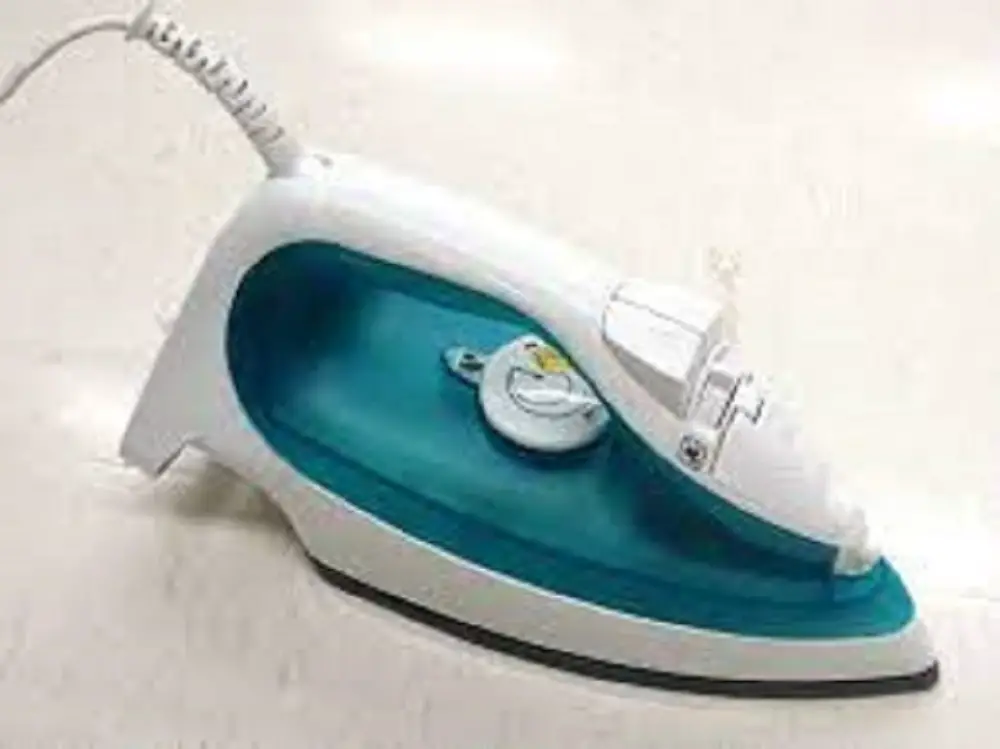If you’ve ever found yourself in a situation where you need to iron your clothes but don’t have an iron box at your disposal, there’s no need for concern.
This comprehensive guide will teach you how to iron without an iron box, offering you simple, efficient methods using common household items. The goal is to help you achieve wrinkle-free, crisp clothes.

Lombroso, CC BY-SA 4.0 https://creativecommons.org/licenses/by-sa/4.0, via Wikimedia Commons
Method 1: Using a Hair Straightener
While a hair straightener is usually reserved for your locks, it can also serve as a quick fix for ironing small clothing items. It’s particularly useful for ironing the collar, cuffs, or seams of shirts.
- Preheat the Straightener: First things first—plug in your hair straightener and set it to a medium heat setting. It usually takes about 2-5 minutes to adequately warm up.
- Place the Cloth on a Flat Surface: Lay your garment on a flat, heat-resistant surface, such as an ironing board or a wooden table. Smooth out the garment with your hands to eliminate as many wrinkles as possible.
- Iron with the Straightener: Open the plates of the hair straightener and place the section of the garment you want to iron between them. Gently clamp down and glide the straightener over the fabric, paying special attention to particularly wrinkled areas.
Be sure to exercise caution while doing this to avoid burning the fabric. Always keep the straightener moving to prevent this.
For more articles like this one click here – How to Iron: Easy Guide to Mastering the Art of Ironing
Method 2: Using a Damp Towel
The damp towel method is a quick and safe alternative for ironing your clothes. It’s especially effective for delicate fabrics that could be damaged by direct heat.
- Wet the Towel: Take a clean towel and wet it under the tap. Wring it out so that it’s damp but not dripping wet.
- Place the Garment: Spread your garment on a flat, heat-resistant surface like an ironing board.
- Apply the Towel: Lay the damp towel over the wrinkled areas of the garment.
- Apply Pressure: Use the palm of your hands to apply pressure over the towel, smoothing out the fabric underneath. Work your way across all wrinkled areas.
Once you’ve covered all areas, remove the towel and check the garment. If wrinkles remain, simply repeat the process until satisfied.
Method 3: Using a Kettle
Using a kettle for steaming provides a safe way to remove wrinkles from delicate or heat-sensitive fabrics.
- Boil Water: Fill your kettle with water and set it to boil.
- Hang the Garment: Hang your wrinkled garment on a clothes hanger, ensuring that it’s free from folds or overlaps.
- Steam: Once the water boils, hold the spout of the kettle close to the wrinkled fabric, but not touching it. Allow the steam to hit the fabric, relaxing the fibers and removing wrinkles.
Ensure you keep a safe distance to avoid water spots or burns. Once you’ve steamed all the wrinkled areas, let the garment air dry for a few minutes.
Frequently Asked Questions
Here are some frequently asked questions…
Is it safe to use a hair straightener on all types of fabric?
Using a hair straightener may not be suitable for extremely delicate or heat-sensitive fabrics. Always do a patch test on a hidden area before straightening the entire garment.
How effective is the damp towel method?
The damp towel method is highly effective for most cotton and cotton-blend fabrics. However, its effectiveness may vary for other types of material.
Can I use a pot instead of a kettle for steaming?
Yes, you can use a pot to boil water and then carefully use the steam to remove wrinkles. However, a kettle provides better control over the direction of the steam.
Conclusion: How to Iron Without an Iron Box
Knowing how to iron without an iron box can be an invaluable skill, especially when you find yourself in a pinch.
Whether you’re traveling, away from home, or your iron box is simply out of commission, these alternative methods provide reliable ways to keep your clothes wrinkle-free.
Using a hair straightener, a damp towel, or a kettle, you can achieve presentable, crisp clothes without the traditional ironing setup.
The key is to be cautious, particularly with fabrics that are sensitive to heat, and to test your method on a small, hidden area first. With these techniques in your arsenal, you’re well-equipped to tackle wrinkled clothes in any situation.